|
While many of us are anxious to put this cold, snowy winter behind us there are some important things to keep in mind with the warming temperatures and the volume of melting snow we're likely to see.
To help keep the water out of your home here are some things you can do: Clear the snow from your roof - Whether it's with a snow rake or a shovel, pay extra attention to the bottom side so when the snow does melt it can get to your gutters or has somewhere to go besides in your home. Shovel around your house - Ideally snow should be cleared 3-5 feet from your foundation, the further away it is the less you're going to have running in to your home. Seepage is typically not covered so it's important to figure out how water drains away from your home. This will also provide relief to your sump pump. Check the discharge line for your sump pump - It should be cleaned, not frozen or covered by snow to prevent water backing up in to your basement. Also test it to make sure it is properly working by using a 5 gallon bucket and placing water into the sump pump basin. We are always available to review your water/sewer back up coverage but please note there is a 10 day waiting period to increase coverage. Flood policies - We have had a number of inquiries about flood policies and in general they do not cover seepage through a foundation or floor like what may happen with melting snow. However, if an overflow covers 2 acres or more that is considered a flood and rising ground water seeping into a basement would be covered under a flood policy. There is a 30 day waiting period for flood policies to kick in. We're happy to discuss this more in depth with you if you have additional questions. Ice Dams - Similar to flood policies we've had many questions on coverage for ice dams. In general they would be covered assuming they're causing damage to the interior of your home but the removal would only be covered in the area where damage has occurred. (If it is not causing damage to your home removal would not be covered.) If you find yourself in this situation, please call us to discuss if a filing a claim is your best long-term interest. In addition, there are a number of companies advertising ice dam removal service and as with any contractor it's important to find one with an acceptable reputation and the proper insurance coverage (i.e. General Liability and Workers Compensation.)
1 Comment
A great tip for cleaning your microwave!
Is the microwave the dirtiest part of your kitchen? Here’s an easy way to fix that. Pour vinegar into a bowl of water and microwave on high. The steam will melt the mess away and make it easy for you to wipe off. its as easy as that! for other great ideas and tips, keep checking back with us! Temperatures rise in the Minneapolis Metro area!Elderly people (65 years and older), infants and children and people with chronic medical conditions are more prone to heat stress.
Air-conditioning is the number one protective factor against heat-related illness and death. During conditions of extreme heat, spend time in locations with air-conditioning such as shopping malls, public libraries, or public health sponsored heat-relief shelters in your area. Get informed. Listen to local news and weather channels or contact your local public health department during extreme heat conditions for health and safety updates Drink cool, nonalcoholic beverages and increase your fluid intake, regardless of your activity level. Heat-related deaths and illness are preventable yet annually many people succumb to extreme heat. Historically, from 1979-2003, excessive heat exposure caused 8,015 deaths in the United States. During this period, more people in this country died from extreme heat than from hurricanes, lightning, tornadoes, floods, and earthquakes combined. In 2001, 300 deaths were caused by excessive heat exposure. People suffer heat-related illness when their bodies are unable to compensate and properly cool themselves. The body normally cools itself by sweating. But under some conditions, sweating just isn’t enough. In such cases, a person’s body temperature rises rapidly. Very high body temperatures may damage the brain or other vital organs. Several factors affect the body’s ability to cool itself during extremely hot weather. When the humidity is high, sweat will not evaporate as quickly, preventing the body from releasing heat quickly. Other conditions related to risk include age, obesity, fever, dehydration, heart disease, mental illness, poor circulation, sunburn, and prescription drug and alcohol use. Because heat-related deaths are preventable, people need to be aware of who is at greatest risk and what actions can be taken to prevent a heat-related illness or death. The elderly, the very young, and people with mental illness and chronic diseases are at highest risk. However, even young and healthy individuals can succumb to heat if they participate in strenuous physical activities during hot weather. Air-conditioning is the number one protective factor against heat-related illness and death. If a home is not air-conditioned, people can reduce their risk for heat-related illness by spending time in public facilities that are air-conditioned. Summertime activity, whether on the playing field or the construction site, must be balanced with measures that aid the body’s cooling mechanisms and prevent heat-related illness. This pamphlet tells how you can prevent, recognize, and cope with heat-related health problems. What Is Extreme Heat? Conditions of extreme heat are defined as summertime temperatures that are substantially hotter and/or more humid than average for location at that time of year. Humid or muggy conditions, which add to the discomfort of high temperatures, occur when a “dome” of high atmospheric pressure traps hazy, damp air near the ground. Extremely dry and hot conditions can provoke dust storms and low visibility. Droughts occur when a long period passes without substantial rainfall. A heat wave combined with a drought is a very dangerous situation. During Hot Weather To protect your health when temperatures are extremely high, remember to keep cool and use common sense. The following tips are important: Drink Plenty of Fluids During hot weather you will need to increase your fluid intake, regardless of your activity level. Don’t wait until you’re thirsty to drink. During heavy exercise in a hot environment, drink two to four glasses (16-32 ounces) of cool fluids each hour. Warning: If your doctor generally limits the amount of fluid you drink or has you on water pills, ask how much you should drink while the weather is hot. Don’t drink liquids that contain alcohol, or large amounts of sugar—these actually cause you to lose more body fluid. Also avoid very cold drinks, because they can cause stomach cramps. Replace Salt and Minerals Heavy sweating removes salt and minerals from the body. These are necessary for your body and must be replaced. If you must exercise, drink two to four glasses of cool, non-alcoholic fluids each hour. A sports beverage can replace the salt and minerals you lose in sweat. However, if you are on a low-salt diet, talk with your doctor before drinking a sports beverage or taking salt tablets. Wear Appropriate Clothing and Sunscreen Wear as little clothing as possible when you are at home. Choose lightweight, light-colored, loose-fitting clothing. Sunburn affects your body’s ability to cool itself and causes a loss of body fluids. It also causes pain and damages the skin. If you must go outdoors, protect yourself from the sun by wearing a wide-brimmed hat (also keeps you cooler) along with sunglasses, and by putting on sunscreen of SPF 15 or higher (the most effective products say “broad spectrum” or “UVA/UVB protection” on their labels) 30 minutes prior to going out. Continue to reapply it according to the package directions. Schedule Outdoor Activities Carefully If you must be outdoors, try to limit your outdoor activity to morning and evening hours. Try to rest often in shady areas so that your body’s thermostat will have a chance to recover. Pace Yourself If you are not accustomed to working or exercising in a hot environment, start slowly and pick up the pace gradually. If exertion in the heat makes your heart pound and leaves you gasping for breath, STOP all activity. Get into a cool area or at least into the shade, and rest, especially if you become lightheaded, confused, weak, or faint. Stay Cool Indoors Stay indoors and, if at all possible, stay in an air-conditioned place. If your home does not have air conditioning, go to the shopping mall or public library—even a few hours spent in air conditioning can help your body stay cooler when you go back into the heat. Call your local health department to see if there are any heat-relief shelters in your area. Electric fans may provide comfort, but when the temperature is in the high 90s, fans will not prevent heat-related illness. Taking a cool shower or bath or moving to an air-conditioned place is a much better way to cool off. Use your stove and oven less to maintain a cooler temperature in your home. Use a Buddy System When working in the heat, monitor the condition of your co-workers and have someone do the same for you. Heat-induced illness can cause a person to become confused or lose consciousness. If you are 65 years of age or older, have a friend or relative call to check on you twice a day during a heat wave. If you know someone in this age group, check on them at least twice a day. Monitor Those at High Risk Although anyone at any time can suffer from heat-related illness, some people are at greater risk than others. Infants and young children are sensitive to the effects of high temperatures and rely on others to regulate their environments and provide adequate liquids. People 65 years of age or older may not compensate for heat stress efficiently and are less likely to sense and respond to change in temperature. People who are overweight may be prone to heat sickness because of their tendency to retain more body heat. People who overexert during work or exercise may become dehydrated and susceptible to heat sickness. People who are physically ill, especially with heart disease or high blood pressure, or who take certain medications, such as for depression, insomnia, or poor circulation, may be affected by extreme heat. Visit adults at risk at least twice a day and closely watch them for signs of heat exhaustion or heat stroke. Infants and young children, of course, need much more frequent watching. Adjust to the Environment Be aware that any sudden change in temperature, such as an early summer heat wave, will be stressful to your body. You will have a greater tolerance for heat if you limit your physical activity until you become accustomed to the heat. If you travel to a hotter climate, allow several days to become acclimated before attempting any vigorous exercise, and work up to it gradually. Do Not Leave Children in Cars Even in cool temperatures, cars can heat up to dangerous temperatures very quickly. Even with the windows cracked open, interior temperatures can rise almost 20 degrees Fahrenheit within the first 10 minutes. Anyone left inside is at risk for serious heat-related illnesses or even death. Children who are left unattended in parked cars are at greatest risk for heat stroke, and possibly death. When traveling with children, remember to do the following: Never leave infants, children or pets in a parked car, even if the windows are cracked open. To remind yourself that a child is in the car, keep a stuffed animal in the car seat. When the child is buckled in, place the stuffed animal in the front with the driver. When leaving your car, check to be sure everyone is out of the car. Do not overlook any children who have fallen asleep in the car. Use Common Sense Remember to keep cool and use common sense: Avoid hot foods and heavy meals—they add heat to your body. Drink plenty of fluids and replace salts and minerals in your body. Do not take salt tablets unless under medical supervision. Dress infants and children in cool, loose clothing and shade their heads and faces with hats or an umbrella. Limit sun exposure during mid-day hours and in places of potential severe exposure such as beaches. Do not leave infants, children, or pets in a parked car. Provide plenty of fresh water for your pets, and leave the water in a shady area. Hot Weather Health Emergencies Even short periods of high temperatures can cause serious health problems. During hot weather health emergencies, keep informed by listening to local weather and news channels or contact local health departments for health and safety updates. Doing too much on a hot day, spending too much time in the sun or staying too long in an overheated place can cause heat-related illnesses. Know the symptoms of heat disorders and overexposure to the sun, and be ready to give first aid treatment. Heat Stroke Heat stroke occurs when the body is unable to regulate its temperature. The body’s temperature rises rapidly, the sweating mechanism fails, and the body is unable to cool down. Body temperature may rise to 106°F or higher within 10 to 15 minutes. Heat stroke can cause death or permanent disability if emergency treatment is not provided. Recognizing Heat Stroke Warning signs of heat stroke vary but may include the following: An extremely high body temperature (above 103°F, orally) Red, hot, and dry skin (no sweating) Rapid, strong pulse Throbbing headache Dizziness Nausea Confusion Unconsciousness What to Do If you see any of these signs, you may be dealing with a life-threatening emergency. Have someone call for immediate medical assistance while you begin cooling the victim. Do the following: Get the victim to a shady area. Cool the victim rapidly using whatever methods you can. For example, immerse the victim in a tub of cool water; place the person in a cool shower; spray the victim with cool water from a garden hose; sponge the person with cool water; or if the humidity is low, wrap the victim in a cool, wet sheet and fan him or her vigorously. Monitor body temperature, and continue cooling efforts until the body temperature drops to 101-102°F. If emergency medical personnel are delayed, call the hospital emergency room for further instructions. Do not give the victim fluids to drink. Get medical assistance as soon as possible. Sometimes a victim’s muscles will begin to twitch uncontrollably as a result of heat stroke. If this happens, keep the victim from injuring himself, but do not place any object in the mouth and do not give fluids. If there is vomiting, make sure the airway remains open by turning the victim on his or her side. Heat Exhaustion Heat exhaustion is a milder form of heat-related illness that can develop after several days of exposure to high temperatures and inadequate or unbalanced replacement of fluids. It is the body’s response to an excessive loss of the water and salt contained in sweat. Those most prone to heat exhaustion are elderly people, people with high blood pressure, and people working or exercising in a hot environment. Recognizing Heat Exhaustion Warning signs of heat exhaustion include the following: Heavy sweating Paleness Muscle cramps Tiredness Weakness Dizziness Headache Nausea or vomiting Fainting The skin may be cool and moist. The victim’s pulse rate will be fast and weak, and breathing will be fast and shallow. If heat exhaustion is untreated, it may progress to heat stroke. Seek medical attention immediately if any of the following occurs: Symptoms are severe The victim has heart problems or high blood pressure Otherwise, help the victim to cool off, and seek medical attention if symptoms worsen or last longer than 1 hour. What to Do Cooling measures that may be effective include the following: Cool, nonalcoholic beverages Rest Cool shower, bath, or sponge bath An air-conditioned environment Lightweight clothing Heat Cramps Heat cramps usually affect people who sweat a lot during strenuous activity. This sweating depletes the body’s salt and moisture. The low salt level in the muscles may be the cause of heat cramps. Heat cramps may also be a symptom of heat exhaustion. Recognizing Heat Cramps Heat cramps are muscle pains or spasms—usually in the abdomen, arms, or legs—that may occur in association with strenuous activity. If you have heart problems or are on a low-sodium diet, get medical attention for heat cramps. What to Do If medical attention is not necessary, take these steps: Stop all activity, and sit quietly in a cool place. Drink clear juice or a sports beverage. Do not return to strenuous activity for a few hours after the cramps subside, because further exertion may lead to heat exhaustion or heat stroke. Seek medical attention for heat cramps if they do not subside in 1 hour. Sunburn Sunburn should be avoided because it damages the skin. Although the discomfort is usually minor and healing often occurs in about a week, a more severe sunburn may require medical attention. Recognizing Sunburn Symptoms of sunburn are well known: the skin becomes red, painful, and abnormally warm after sun exposure. What to Do Consult a doctor if the sunburn affects an infant younger than 1 year of age or if these symptoms are present: Fever Fluid-filled blisters Severe pain Also, remember these tips when treating sunburn: Avoid repeated sun exposure. Apply cold compresses or immerse the sunburned area in cool water. Apply moisturizing lotion to affected areas. Do not use salve, butter, or ointment. Do not break blisters. Heat Rash Heat rash is a skin irritation caused by excessive sweating during hot, humid weather. It can occur at any age but is most common in young children. Recognizing Heat Rash Heat rash looks like a red cluster of pimples or small blisters. It is more likely to occur on the neck and upper chest, in the groin, under the breasts, and in elbow creases. What to Do The best treatment for heat rash is to provide a cooler, less humid environment. Keep the affected area dry. Dusting powder may be used to increase comfort. Treating heat rash is simple and usually does not require medical assistance. Other heat-related problems can be much more severe. This information provided by NCEH’s Health Studies Branch. Using fans to cool your home is energy efficient. After you determine the natural ventilation scheme in your home, you can enhance the effect with the use of active fans. When choosing fans, check for efficiency ratings. Fans are rated by how much air they can move in a given amount of time. The most common spec is cubic feet per minute (cfm). Calculate how many cubic feet are in your house, room, or attic (length x width x height) to find the proper-size fan. Fans move air most efficiently when they have a cowling. Cowlings prevent air around the tip of the blades from circling about outside the blades, instead forcing that air forward, yielding much more air for the same power draw. A cowling on a fan directs airflow and improves efficiency.
Many fans are available at a wide range of prices. Choosing the right unit for your needs can ensure you get the effect you’re looking for.
You can take advantage of the chimney effect to cool your home without using an air conditioner. Using natural ventilation is an easy way to green up your lifestyle and save you money by reducing your cooling bills in the summer. In a closed room, the temperature at the ceiling is always higher than that on the floor because hot air is less dense than cold air. The difference in air temperature can be more than 15 degrees Fahrenheit. You can achieve cooling, without any prevailing breezes at all, by arranging vents in your house so the heat can escape in a fairly direct path. Note that the openings are at different heights, which is key. To lay out your air-movement strategy, draw a rough floor plan of your house, marking all the windows, doors, skylights, vents, fans, and so on. Draw your attic, with all the vents and openings. Then, use what you know about prevailing winds to figure out what the natural ventilation scheme is for the house and attic. Many different types of vents allow you to take advantage of the chimney effect.Typically, prevailing winds come from the southwest in the summer and the northwest in the winter. Some areas have very consistent prevailing winds, but other areas experience changes almost daily. Refine your understanding of the winds in your area by keeping a log. On paper, experiment with different combinations of doors and windows and vents to determine how to achieve comfort without using fans. Then imagine using fans to forcibly move air. Make sure that you follow some general ventilation rules:
The Essentials of Cooling Your Home the Green WayYou can take advantage of prevailing winds to cool your home without using an air conditioner. Using natural ventilation is an easy way to green up your lifestyle and save money by reducing your cooling bills in the summer. The most efficient ways to move air always complement the natural ventilation scheme and never work against it. This is the key to making passive systems work; cooperation, not competition. Typically, prevailing winds come from the southwest in the summer and the northwest in the winter. Some areas have very consistent prevailing winds, but other areas experience changes almost daily. Refine your understanding of the winds in your area by keeping a log. You want to create a kind of mini wind tunnel so that the air follows its natural path, coming in through one window and blowing out the one across from it without getting sidetracked. Prevailing winds dictate the natural movement of air in your home.Here’s a typical situation:
With windows 1 and 3 open, aiming a fan out window 3 enhances the natural scheme. However, if you mount a window fan aiming into the house at window 3, it works directly against the natural ventilation scheme. You may end up with no air movement at all, and you draw utility power, which is about as inefficient as you can get. The prevailing winds blow toward window 1, so a fan at window 1 should blow into the room. If you set a fan in the middle of the room with windows 1 and 3 open, with the fan facing window 3, you enhance the natural scheme, but not nearly as efficiently as when the fan is right in the window. Locate fans to enhance natural ventilation. Most of us are aware of proposed “Regional Standards”. Below is the latest stand on the proposed standards. At least for now it looks like the standards will be at least postponed for a while. Please read the following.
There are many conflicting rumors regarding the implementation of the Department of Energy’s (DOE) “Direct Final Rule,” which establishes minimum AFUE standards for residential non-weatherized and mobile home gas furnaces at 90% AFUE in the Northern region of the United States and 80% AFUE in the Southeastern and Southwestern regions of the United States. The Direct Final Rule was to go into effect on May 1, 2013. The American Public Gas Association (APGA) challenged the DOE’s Direct Final Rule on furnaces in Federal Court, which resulted in a negotiated settlement between the DOE and APGA. The negotiated settlement vacates the Direct Final Rule on furnaces (mentioned above) if the settlement is accepted by the Court. If the Direct Final Rule is vacated, the pending May 1, 2013 implementation date is no longer in effect and the DOE will most likely initiate a new negotiated rulemaking. Recently, the Heating, Air-conditioning and Refrigeration Distributors International (HARDI) petitioned the Court, asking to replace the APGA in the lawsuit against the DOE, presumably to challenge the Air Conditioning and Heat Pump Regional Standards, which are effective January 1, 2015. This recent development complicates matters and may impede the Court’s swift acceptance if the negotiated settlement between the DOE and the APGA. If the negotiated settlement is not accepted, the implementation date would most likely shift well past May 1, 2013, because most parties involved (Manufacturers, Distributors, Dealers and the DOE) are not prepared for a May 1, 2013 implementation date. Air conditioner repair services have several things in common, chief among them being the need to provide quality service and AC heating repair for customers who have many different types of air conditioners that need repaired. Technicians who work with air conditioners undergo a comprehensive and lengthy training to be able to install and repair them. One of the most important qualities that an AC Heating repair technician needs to have is a good work ethic along with the ability to handle the demands of the job which often involves work in difficult conditions and a broad knowledge of electrical, mechanical and math is needed.
Many of the most popular air conditioners manufactured today are those that have combined the traditional mechanics of air conditioners with the monitoring technology of digital instruments that allow the monitoring and running of the appliance to be smarter at keeping the temperature at a constant number instead of allowing a few degrees one way or another like the older systems did. The MAYTAG company; Lennox Industries; Rheem/Ruud; Armstrong & Air-Floe and several others are all well known for offering quality air conditioners for any size home or office building as well as having trained people to install and repair them. If you are online and search for AC Heating Repair in your home town or city, there will no doubt be dozens of entries of companies in the business of repairing your heating and air conditioning units. You want one that will be honest and know about the type of air conditioner you have. Be certain to check what types of training they have and how long they have been in business as this is an important fact. You want some one who has been in business long enough to know what they are doing. A good idea is to check out the company with the local chapter of the BBB because they will have a record of complaints or of what they have done right. Word of mouth may also give you some good leads as to the better companies in your area. Another great idea is to call and ask questions of several companies as you can find out the hours, service offered, estimates of repairs; this will help you to decide which AC Heating Repair company to work with in repairing or replacing your air conditioning system. These suggestions are just a few of the items to consider when you talk to companies that sell and repair the heating and air conditioners that help make our lives much more comfortable in the heat of the summer and the cool of winter weather, no matter where we live. Controlling the amount of sunlight that enters your house or patio is an easy way to cut your cooling and heating bills, regulate your home’s temperature, and enhance the appearance of your house. Window coverings are a great way to control the amount of light that comes in and to create an insulating or cooling effect in your home. With a blind inside, you can get the best insulation. However, the heat gets inside because sunshine comes in through the window and strikes the blind. The gap between the blind and the window can get very hot because of the greenhouse effect. This result is desirable in the winter but not the summer, when you may have a cooler room if you just leave the window uncovered and let the sun and air in. You can get interior blinds made to warm a room in the winter if that’s your main goal. They absorb sunlight, and they also provide insulation where you need it. On the other hand, interior blinds for summer reflect a lot of light on the outside (exterior) surface, which may be made of a different material or made a different color than the inside surface. In general, a white blind works best for reflecting sunlight, but you can also find (more expensive) specially coated blinds that reflect the maximum amount of sunlight. With a solar screen tacked up on the outside of a window, most of the sunlight is filtered before it even gets to the window. The screen gets hot, and you end up with an insulation barrier to keep that heat trapped, but it’s all outside the window, which makes for a cooler interior. This is good for summertime, but counterproductive for winter. Different ways to cover a window.The following table covers the various window coverings available: Window Covering options
The best cooling effect is to allow for some ventilation between an outside blind and the opened window that it’s covering. But that setup isn’t always easy or practical.
When your air conditioner is on, you want to create as much insulation as possible. You can do so by closing your blinds all the way. If you have outside covers, lower them into place. The best scheme for a sunny house that uses a lot of air conditioning is both solar screens and interior blinds. The house is relatively dark inside, but it’s also cooler. (You can also use window overhangs.) http://www.achrnews.com/articles/121462-rules-may-boost-standard-furnace-sales
click on the link for some great reading out of one of the top national trade magazines |
AuthorSwenson Heating & Air Conditioning - Various Archives
March 2019
Categories |


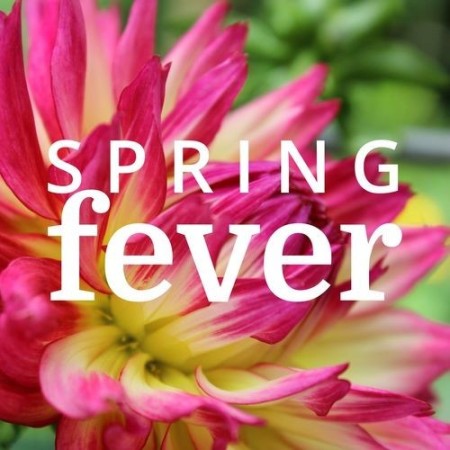
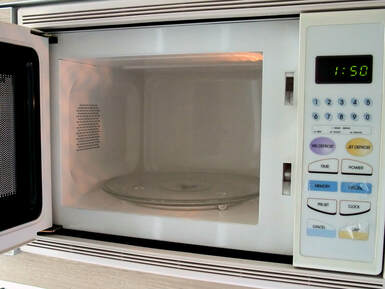
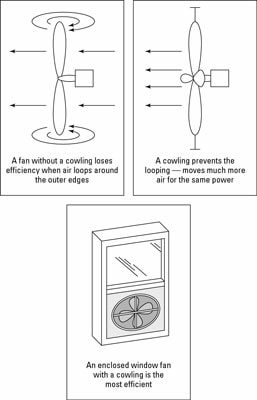
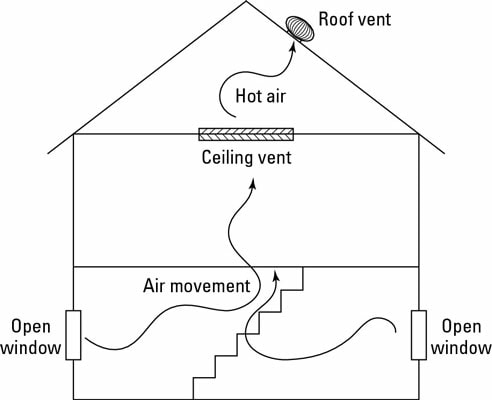
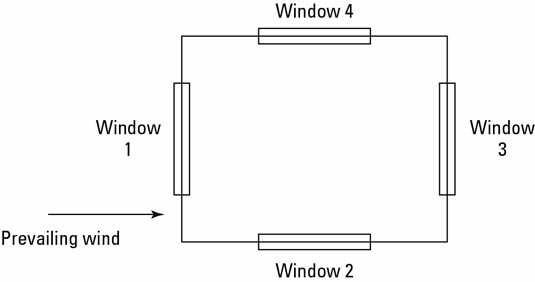
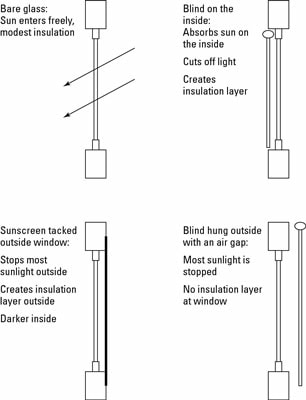
 RSS Feed
RSS Feed




